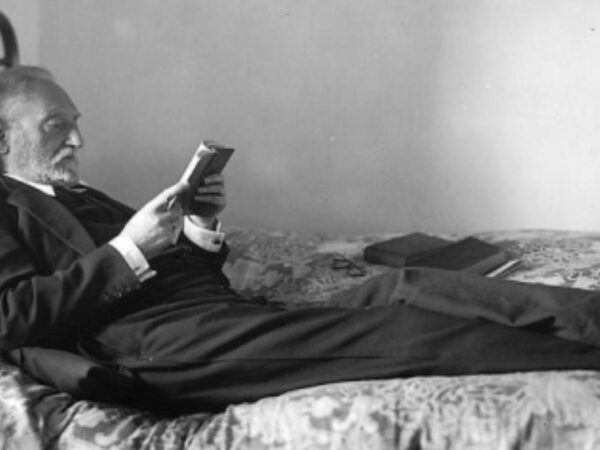William Shakespeare, Accusations of Plagiarism

Contents
All those things: playwright, actor, poet (or some of them, as we will see later) was William Shakespeare, who is still considered one of the greatest playwrights in the world and who is credited with authorship – in whole or in part – of a total of thirty-eight theatrical works and an abundant poetic production.
Shakespeare was born into a family without many resources: he was the eldest of eight siblings and, at that time, tradition led him to learn the trade of the father, butcher, because being the first-born guaranteed him to be the continuing heir of the family business .
But fate wanted his life to develop in other very different directions, in all imaginable aspects of an incipient and popular art: theater.
In 1588 he left his native Stratford-on-Avon and moved to the London capital where in just four years he began to be considered as an actor.
A different theater
In Shakespeare’s time, during the reign of Elizabeth I, the theater was not yet staged in rooms suitable for this purpose. It was in the courtyards of the inns where the theatrical performances took place.
It was not until 1576 that the first room conceived for the theater, in Blackfriars, was opened to the public.
The theater was considered a minor art. Until with Shakespeare’s tragedies, the public began to give it the artistic quality it deserved as a show.
Through a series of circumstances and aided by his protector, the Earl of Southampton, he became a shareholder in the Lord Chamberlain’s Men theater company, which eventually became the King’s Men’s company.
This company performed plays at the Globe Theater, a hall that became the property of Shakespeare.
The company made itinerant tours throughout the provinces of the Empire, although on many occasions, due to the current epidemics that afflicted some territories, the show was set at the Globe theater.
Shakespeare, accused of plagiarism
From the beginning, the authorship of all works attributed to William Shakespeare has been called into question. For example, a 16th century scholar, Abel Lefranc, imputed all of Shakespeare’s plays to the pen of the Earl of Derby.
Or, for example, Delia Bacon, in the 19th century and after undertaking a series of serious investigations, came to the conclusion that her ascendant, Sir Francis Bacon, a famous English philosopher and statesman, was actually the author of the works of theater signed by William Shakespeare.
Other researchers point in another direction, stating that the creator of part of the Shakespearean tragedies is Christopher Marlowe, considered the greatest English poet and playwright until the arrival of William and who undoubtedly influenced the style and conception of the stories that the company represented the public.
Theatrical pieces dominated by characters whose central axis revolves around a great passion, but hostile fate and, sometimes, inordinate ambitions, usually lead some of these characters to catastrophe. The funny thing is that all these theories, including that the author of some tragedies is his friend and protector, the Earl of Southampton, are given credit.
On the other hand, the plays attributed to him: “Romeo and Juliet”, “A Midsummer Night’s Dream”, “King Lear”, and so on. they were published posthumously, after Shakespeare died.
During the 16th century, at the time of the writer, theatrical works were not considered works of art, so they were never printed, the stage was the only place where the work came to life. So it is possible to think that although Shakespeare was not the original owner of his works, he could be the author of versions of original ideas of others.
Francis Meres, a contemporary author of William wrote: “If the muses wanted to learn English, they would take the diamond style of sweet Shakespeare.”
Possible plagiarism of Shakespeare
Some researchers have compiled the possible plagiarism that Shakespeare’s hand – voluntarily or involuntarily – perpetrated.
>> “Hamlet” (1601) seems to be based on the “History of the Danes”, written by an author named Saxo Grammaticus from the 13th century.
>> “King Lear” (1606) seems to come from a tragedy in white verse by Thomas Sackville.
> It is also considered that the tragedy of the lovers that William signed with his last name, “Romeo and Juliet”, is based on a story written by Masuccio de Salerno, a 15th century Italian author, a work that Lope de Vega adapted for him theater in Castilian.
Almost from the beginning of his public career, Shakespeare was accused of plagiarism. The first mention comes from Robert Green, a very prolific and popular playwright of the time, who without directly mentioning him accuses him of taking advantage of ideas already reflected in literature.
It is known that in those times, plagiarism was a fairly widespread custom, partly because the historical period in which our look at the past is framed was a time when the public demanded what is known as “blood tragedies” and In addition, the public was constantly looking for novelties, hence it is possible that Shakespeare was forced to adapt stories he knew to satisfy a very demanding public with the variety of the show.
In addition, the themes that were represented in those rickety patios of the fondas were repeated ad nauseam, since they used to have the same plot basis.






